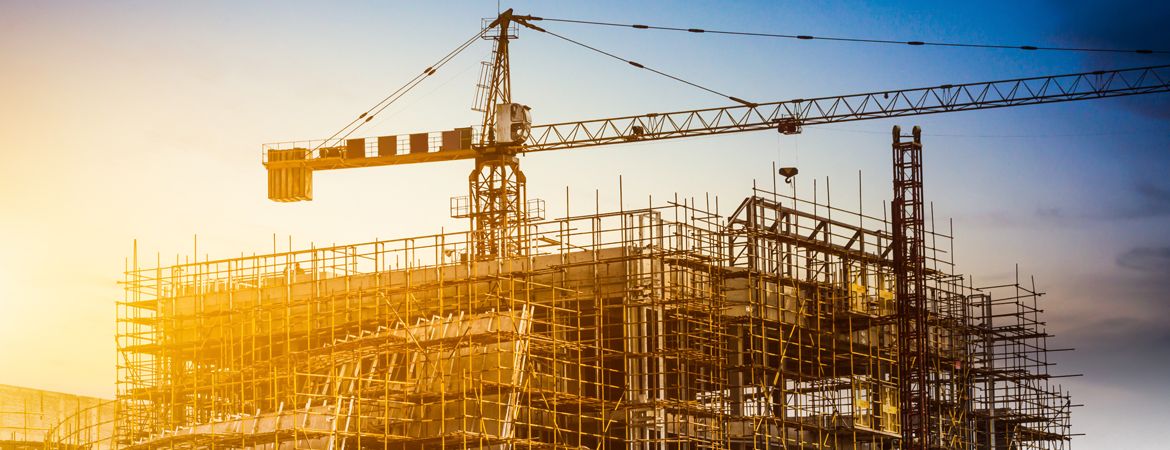A Guide to Choosing the Right Building Materials for Your Project

When embarking on a construction project, one of the pivotal decisions you’ll face is selecting the right building supplies. The materials you choose not only impact the aesthetics of the structure but also play a crucial role in its durability, sustainability, and overall performance. In this comprehensive guide, we’ll delve into the key considerations to help you navigate the labyrinth of options and make informed decisions for your construction endeavor.
Understanding Your Project Requirements
Before diving into the world of building materials, take a step back and assess the unique requirements of your project. Consider factors such as:
1. Project Type:
- Residential: For homes, factors like comfort, aesthetics, and energy efficiency are crucial. Consider materials that contribute to a cozy living environment, such as insulated walls and energy-efficient windows.
- Commercial: Commercial projects often prioritize functionality and durability. Materials with low maintenance requirements and high durability, like concrete and steel, are commonly chosen.
- Industrial: Industrial projects may require materials capable of withstanding heavy loads and harsh conditions. Steel, reinforced concrete, and composite materials are popular choices.
2. Climate and Location:
- Climate: In areas with extreme temperatures, materials with excellent insulation properties, such as insulated concrete forms (ICFs) or double-glazed windows, can enhance energy efficiency.
- Coastal Areas: For coastal regions, corrosion-resistant materials like stainless steel or fiber-reinforced polymers are essential to combat the corrosive effects of saltwater.
3. Budget Constraints:
- Cost-effective Options: If budget constraints are a primary concern, consider materials like vinyl siding or engineered wood that offer a balance between cost and durability.
- Premium Materials: For those willing to invest in premium materials, options like high-end hardwoods, architectural metals, or sustainable materials may be appealing.
Material Durability and Longevity
The durability of building materials is paramount for the longevity of the structure. Consider the lifespan of the materials in relation to your project’s intended use and longevity goals.
1. Wood:
- Aesthetic Appeal: Wood provides a warm and natural aesthetic, making it a popular choice for residential projects.
- Treatment and Maintenance: Regular treatments with preservatives or sealants are essential to protect wood from pests and decay.
- Engineered Wood: For enhanced durability, consider engineered wood products that resist warping and decay.
2. Concrete:
- Strength and Versatility: Concrete is renowned for its strength and versatility, making it suitable for a wide range of applications.
- Surface Finishes: The appearance of concrete can be customized with various finishes, such as polished, stamped, or stained concrete.
- Precast Concrete: Offers enhanced durability and quality control, particularly for large-scale projects.
3. Steel:
- Strength and Load-Bearing Capacity: Steel is unparalleled in its strength and load-bearing capacity, making it ideal for skyscrapers and large commercial structures.
- Corrosion Protection: Galvanized or stainless steel helps prevent corrosion, but regular inspections are crucial to address potential issues.
- Design Flexibility: Steel’s malleability allows for innovative and intricate designs.
Environmental Impact and Sustainability
In an era of increasing environmental awareness, choosing sustainable building materials is not just a trend but a responsible choice. Consider the ecological footprint of materials and their impact on the environment.
1. Recycled Materials:
- Reducing Resource Demand: Utilizing recycled steel, glass, or plastic reduces the demand for new resources, contributing to a circular economy.
- Creative Applications: Reclaimed wood and recycled glass can add unique and aesthetically pleasing elements to your project.
- Life Cycle Analysis: Consider materials with a positive life cycle analysis, indicating their environmental impact over their entire lifespan.
2. Bamboo:
- Rapid Renewability: Bamboo is a rapidly renewable resource, reaching maturity in a fraction of the time compared to traditional hardwoods.
- Versatility: Used for flooring, furniture, and structural elements, bamboo offers a versatile and eco-friendly alternative.
- Carbon Sequestration: Bamboo actively sequesters carbon dioxide, contributing to carbon neutrality.
3. LEED Certification:
- Holistic Approach: LEED-certified materials contribute to a holistic approach to sustainable building, addressing energy efficiency, water conservation, and indoor air quality.
- Energy-Efficient Options: Look for materials with high thermal resistance (R-value) to contribute to the energy efficiency of the building envelope.
- Recyclability: Materials that can be recycled at the end of their life contribute positively to LEED certification.
Aesthetics and Design Flexibility
The visual appeal of your project is often a top priority. Consider the design flexibility and aesthetic qualities of different materials.
1. Brick:
- Timeless Appeal: Brick provides a timeless and classic aesthetic suitable for various architectural styles.
- Color and Texture Variety: Available in an array of colors and textures, allowing for creative and customized designs.
- Thermal Mass Benefits: Offers excellent thermal mass, helping regulate indoor temperatures and reduce energy consumption.
2. Glass:
- Modern and Open Feel: Glass creates a modern and open atmosphere, allowing natural light to flood the interior.
- Energy-Efficient Options: Low-emissivity (Low-E) coatings enhance energy efficiency by minimizing heat transfer.
- Customization: From clear to tinted, and even frosted or textured, glass offers a spectrum of design possibilities.
3. Stone:
- Luxurious Appearance: Stone provides a luxurious and natural appearance, often associated with high-end architecture.
- Durability: Highly durable and resistant to wear, making it suitable for both interior and exterior applications.
- Weight Considerations: Consider structural implications and foundation requirements due to the weight of stone materials.
Maintenance Requirements
Understanding the maintenance needs of different building materials is crucial for long-term cost-effectiveness.
1. Low Maintenance:
- Metal: Metal materials, such as aluminum or steel, generally require minimal maintenance and are resistant to pests and decay.
- Vinyl Siding: Vinyl siding is known for its low maintenance requirements, requiring periodic cleaning to maintain appearance.
- Concrete: Depending on the finish, concrete can be low-maintenance, with occasional sealing to prevent cracks.
2. Regular Maintenance:
- Wood: Wooden materials often require regular maintenance, including staining or painting and pest control measures.
- Brick: While durable, brick may need occasional repointing and cleaning to preserve its appearance.
- Concrete: Surface cracks in concrete may require patching or sealing to prevent water penetration and further damage.
Local Building Codes and Regulations
Always check and adhere to local building codes and regulations when selecting materials for your project. Some areas may have specific requirements regarding structural integrity, fire resistance, and environmental impact.
Seek Professional Advice
When in doubt, seek advice from professionals in the field. Engage with architects, engineers, and contractors who have experience with different materials and can provide valuable insights tailored to your project’s needs.
Choosing the right building materials is a multifaceted process that requires careful consideration of various factors. By understanding your project requirements, prioritizing durability, considering sustainability, and factoring in aesthetic preferences, you can make informed decisions that contribute to the success and longevity of your construction project. Remember, each material has its unique characteristics, and finding the perfect balance is key to creating a structure that stands the test of time.





